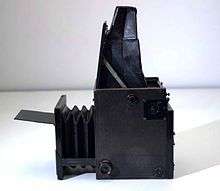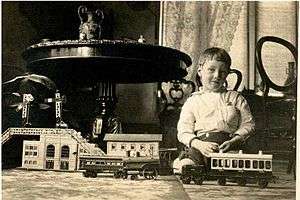John Twycross
John William Twycross (1871–1936) was an Australian Pictorialist photographer . His main body of work was produced between 1918 and 1932. The photographs documented rural scenes, seascapes, working life, and architecture around Port Phillip Bay, and Melbourne.

Early life
John was born in 1871 in Melbourne, Australia. In 1881 he was one of the first students to attend Caulfield Grammar School.
The Twycross family lived on the corner of Beavis St. and Glenhuntley Rd, and their home "Emmarine", was one of only four houses between the Elsternwick Railway Station and Kooyong Rd, in what was then the rural district of Elsternwick.
At home, he grew up surrounded by a large Collection of decorative arts and paintings. His father, also named John Twycross, a woolmerchant from Wokingham, was an art collector who established much of his collection whilst attending the Melbourne International Exhibition (1880).[1]
Art Studies
Subsequently John studied art at school, his ambition being to paint in Florence. This plan was thwarted by the land crash of 1889. He had to leave school early and thus worked at the Bank of New South Wales until retirement.
Nonetheless, in the years to come he continued to paint, inspired by frequent voyages by paddle steamer across Port Phillip Bay to visit his mother's family, The Burrells of Arthur's Seat, the cattle run they purchased from the McCrae family in 1851. After his parents died, JW Twycross continued to journey to the Peninsula and to paint there.


The Photographer
In 1918 he purchased a Thornton-Pickard Westminster quarter plate camera, and set about documenting his life both around Melbourne and on the Mornington Peninsula. During his career as a banker based in the city of Melbourne he spent his weekends pursuing photography, often accompanied by his young son. He also photographed the workaday streets of Melbourne, spending his lunch hour capturing the energy of the young and growing city.
He was self-taught as a photographer and as a printer and learned from studying the early photographic journals that were imported from England.

His Vision
JWT practiced photography with a sense of purpose that alluded to intentions of capturing a rapidly changing period in time. This was especially true of old Arthur's Seat run, now known as McCrae Homestead. He photographed the Mornington Peninsula before it was populated, capturing the beaches, inlets, and swamps, in an area that has since then, vastly changed . He never exhibited his work in public. He taught his young son how to use a camera and how to print in the pictorialist style. JWT used the kitchen at his home in Elsternwick to process his work.
Burrell Twycross Gallery
At McCrae Homestead, a National Trust Property, a permanent exhibit "Visions of Port Phillip" displays his work.[2] His photographs were first displayed in public at an exhibit by the National Trust of Australia at Tasma Terrace in 2005.[3]
Another major exhibition of his work "At first sight: Peninsula and bay photographs by J W Twycross 1918–1925" was displayed in March, 2012 at Mornington Peninsula Regional Gallery [4]

Notes
- John Twycross and the 1880 Melbourne International Exhibition with Charlotte Smith and Phillip Adams
- McCrae Homestead and Galleries
- My Family: A Pictorialist’s View- J. W. Twycross, Tasma Gallery, 4 Parliament Place, East Melbourne. 1 August – 14 October
- At first sight: Peninsula and bay photographs by J W Twycross 1918–1925 "Archived copy". Archived from the original on 25 March 2012. Retrieved 26 March 2012.CS1 maint: archived copy as title (link)